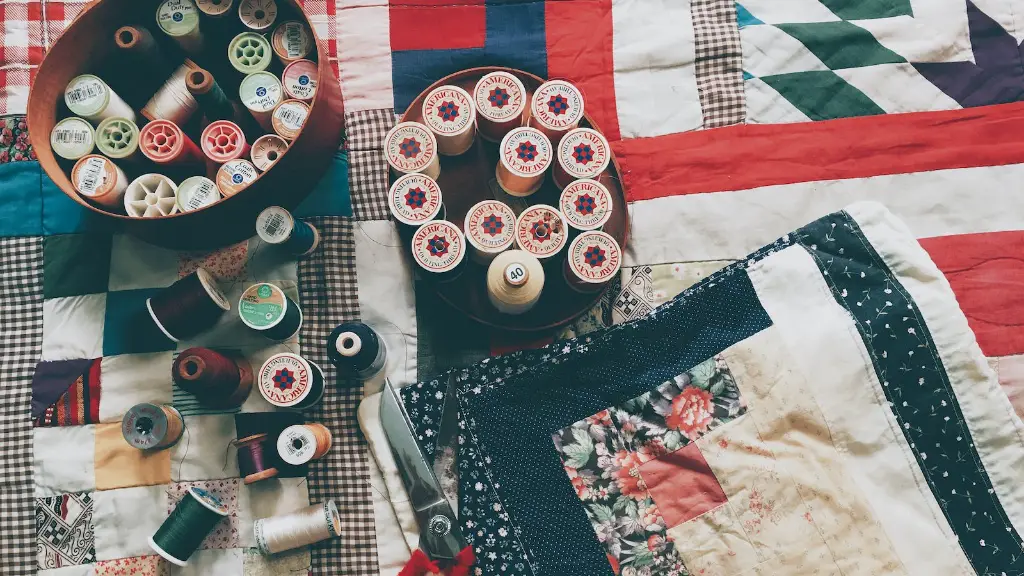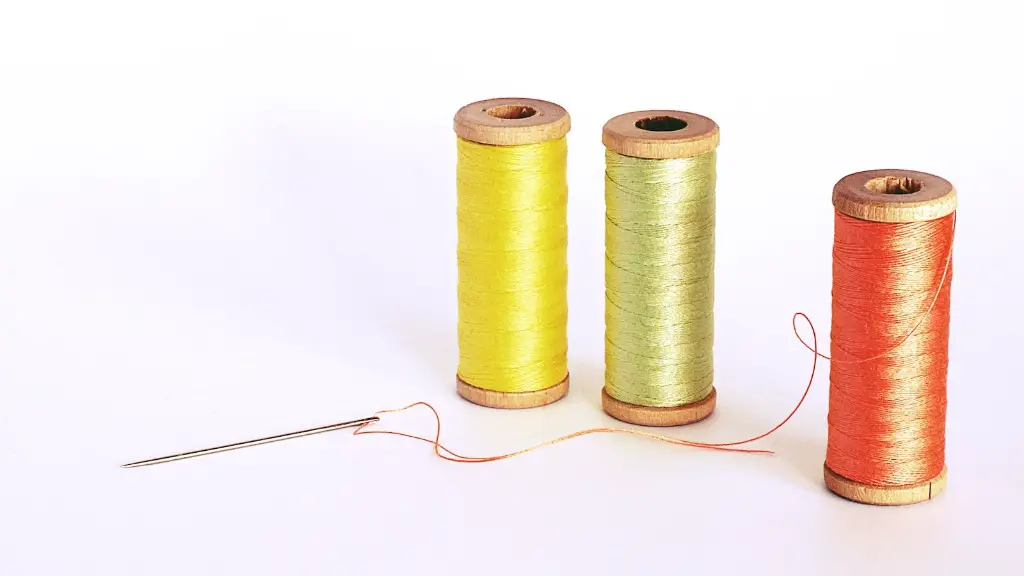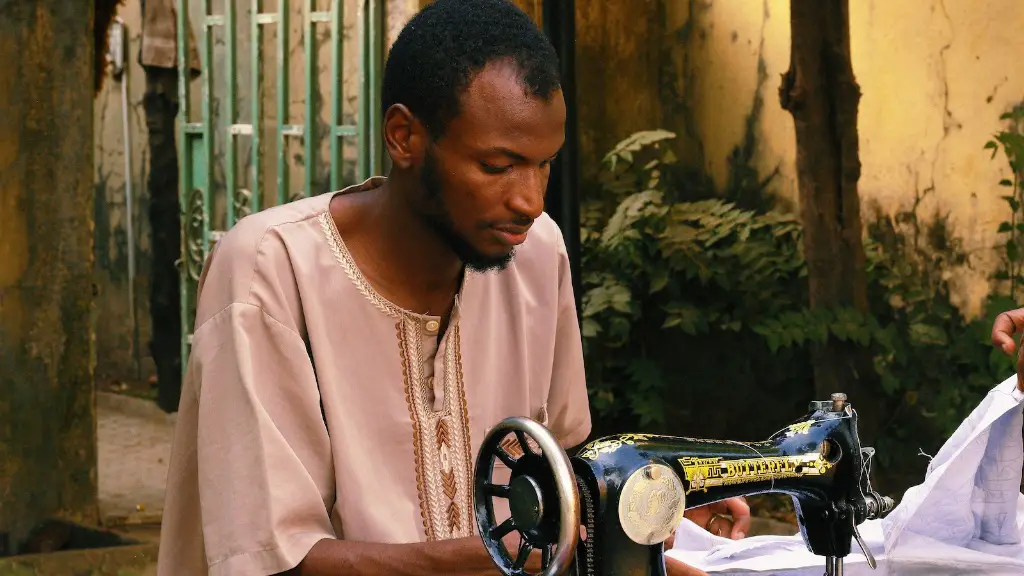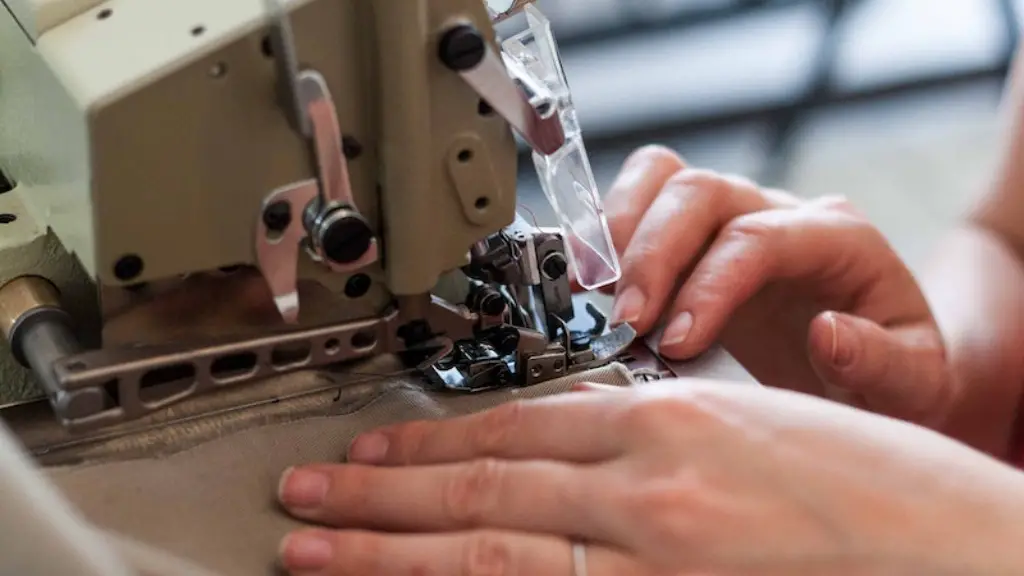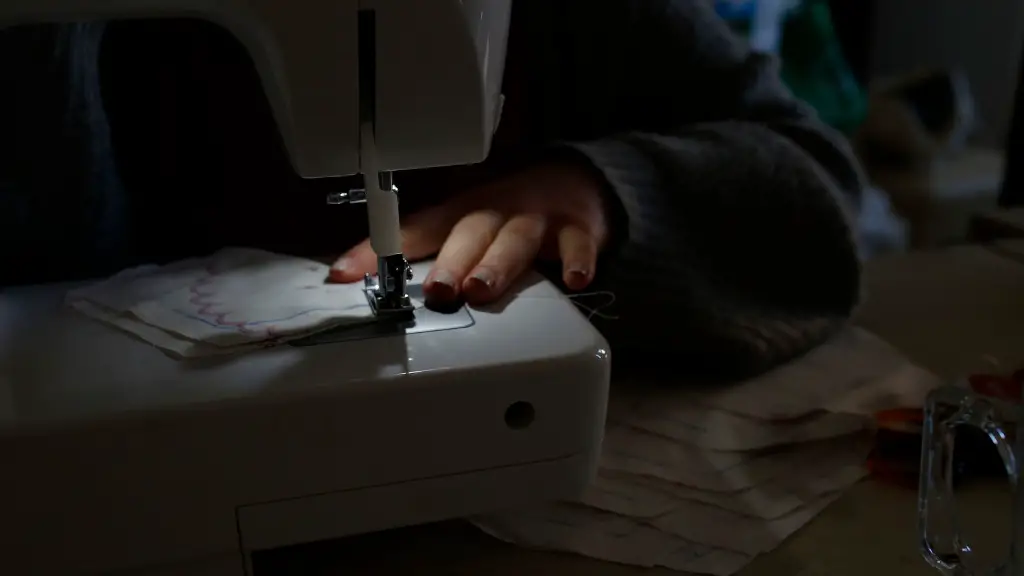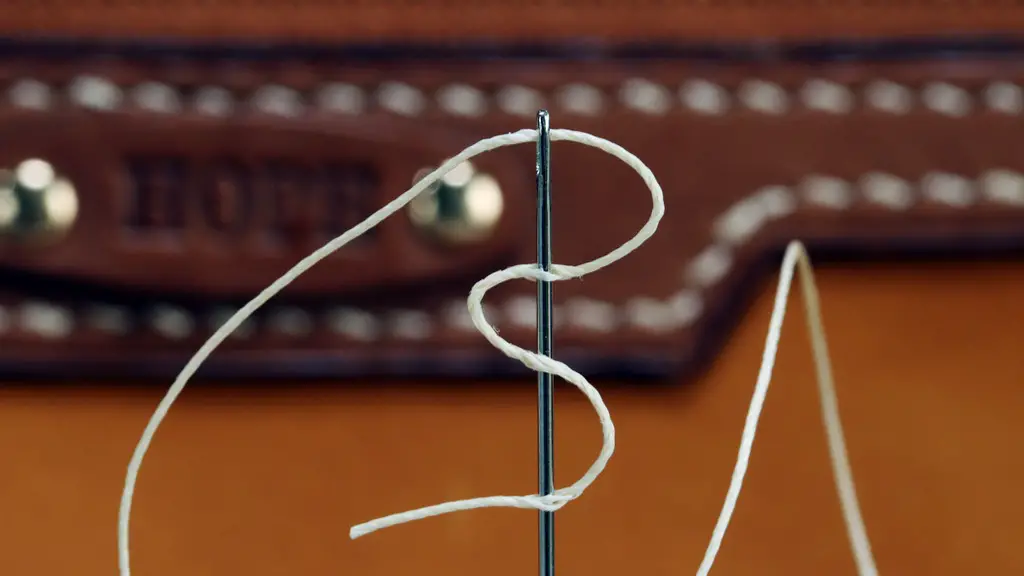Sewing is an important skill for many garment makers, and learning how to finish a seam on a sewing machine is an essential part of the craft. Seam finishing is the process of constructing an enclosed shape on the fabric where two sections of cloth meet. Finishing seams prevents the curtains from fraying, losing their shape, and unravelling. If done correctly, perfectly finished seams give your garments a professional, polished look.
When beginning a seam you must have a basic knowledge of the basics of sewing machine functioning and the accessories that help seam finishing. To start, the correct seam allowance needs to be determined. This is the space between the seam and the edge of the fabric. Seam allowances can range from one-eighth to five-eighths of an inch, depending on the fabric type, pattern level and size, and the desired result.
Once the seam allowance has been determined, sew the seam together. Make sure you backstitch at the beginning and end of each seam to securely connect the pieces. Once the seam is sewn together it is necessary to finish the edges so that the seam will not unravel. This can be done in several ways, some of which include a zigzag stitch, using a serger, pinking or using a French seam.
The zigzag stitch is the most basic seam finish, and it is done by setting the sewing machine to a zigzag stitch and zigzagging along the edge of the seam allowance. This method of finishing seams is better for fabrics that are not prone to fraying, such as lightweight wools and synthetic fabrics.
A serger, also known as an overlocker, is a type of finishing tool that trims and stays the edge of the fabric in one motion. It is used to stitch the edges of the fabric together, giving them a professional finish. It is especially good for heavier fabrics.
When using fabric that is prone to fraying, such as lightweight cotton, or delicate silks, the fabric should be pinked instead. This is done by using a special pair of scissors and cutting small notches along the edge of the fabric to prevent fraying.
Finally, a French seam is a technique that encloses the raw edges of the fabric while stitching the seam. This technique is ideal for very sheer materials, as it will prevent the fabric from fraying, while also creating a professional and attractive finish.
Adding Seam Binding
Another way to finish the edges of a seam is to use a seam binding. This is a strip of light-weight fabric, usually nylon or grosgrain, that is sewn onto the edges of the fabric to prevent it from fraying. Seam binding can be purchased at most fabric stores, and it is easy and quick to apply. The binding should be sewn onto the edge of the fabric with a zigzag stitch or an overlock stitch. Once the seam is finished, the binding can be pressed down or top stitched for a more polished appearance.
Seam binding is a great way to finish off the edges of delicate or sheer fabrics, and it also adds a decorative touch to items. If a smooth finish is desired, it is best to top stitch the binding in place to make sure it stays flat. Seam binding is also a good choice for fabrics that will be exposed to weather as it is resistant to mildew and other moisture problems.
The most important thing when working with seam binding is to make sure that it is stitched on correctly. If it is not stitched correctly, the binding will not stay in place and it may cause the fabric to fray. It is also important to remember that seam binding is quite bulky and will add some weight to the finished piece.
Using Different Seams
In addition to the standard straight stitch, there are many other types of seams that can be used to finish a seam. These include flat-felled seams, French seams, and bound seams. All of these types of seams offer a professional and attractive finish, but each one has its own advantages and disadvantages.
Flat-felled seams are extremely secure and strong, making them ideal for garments that will be washed often. The disadvantage of this seam is that it is time-consuming to sew. French seams are slightly more decorative than a standard straight stitch, and they are also quite easy to sew. The downside of French seams is that the seam allowance can be a bit bulky.
Bound seams are another popular choice for seam finishing, and they provide a smooth, neat finish that looks professional. The downside of bound seams is that they are quite time-consuming to sew and require a great deal of skill and experience.
No matter which type of seam you choose to finish your seams, you should always follow the instructions provided by your sewing machine manufacturer.
Tips For Seam Finishing
When finishing a seam, there are a few tips to keep in mind that will help the process go smoother. First and foremost, always start off with a regular straight stitch to secure the seam. This will help prevent the fabric from bunching or twisting when the seam is being finished.
It is also important to choose the correct thread and needle size. Make sure that the thread is the same weight as the fabric, and that the needle is suitable for the task. If the thread and/or needle are too heavy, the seam may not lay flat, and it can cause the fabric to pucker.
If using a sewing machine for seam finishing, always clean and oil the machine before you start. This will help ensure that all of the components are functioning properly, and that the machine will sew a smooth, even stitch.
When stitching and pressing seams, use a pressing cloth. This will help to prevent any marks from the heat of the iron, or from the stitching itself. And lastly, be patient. Seam finishing is an important part of the sewing process, and it takes time and practice to get it right.
Seam Finishing Techniques
Once the fabric has been properly prepped, the next step is to decide which seam finishing technique to use. There are a few basic techniques that can be used to finish seams, all of which will provide a professional and attractive finish. Some of these include topstitching, serging, mock flat-felled seams, and French seams.
Topstitching is a decorative way to finish a seam. It is usually done with contrasting thread and is used to add detail to the piece. Serging is a quick and easy way to finish seams and is ideal for lightweight fabrics. Mock flat-felled seams are similar to traditional flat-felled seams, but the raw edges are not completely enclosed. Finally, French seams are most often used for sheer fabrics, as they provide a neat and professional finish.
Depending on the fabric and the desired finish, any of these techniques may be used to finish seams. However, it is important to remember that some fabrics may require a different technique or a different stitch width for optimal results.
Conclusion
Finishing seams on a sewing machine is an important part of garment construction. It gives garments a polished and professional look, while also preventing the fabric from fraying or unravelling. Seam finishing can be done in a few different ways, such as using a zigzag stitch, serger, pinking, French seam, or binding. Additionally, there are a few tips to keep in mind when finishing a seam, such as cleaning and oiling the machine, using the correct thread and needle, and pressing the seam with a pressing cloth. All of these techniques and tips will help ensure that your garments have professional seams that will last for years.
